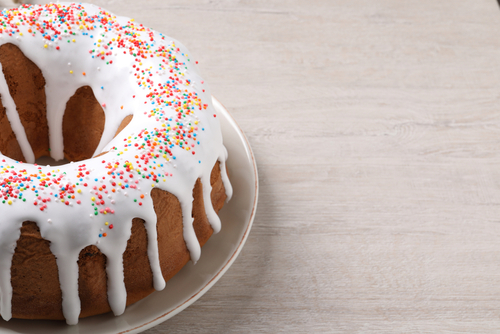As Christian holidays approach, there’s an undeniable sense of joy and anticipation in the air. One beautiful way to celebrate these special occasions is through the art of cooking and baking. Whether you’re looking to create memorable treats for Easter or other Christian festivities, involving the whole family in the kitchen can add a meaningful layer to the celebration. In this blog post, we’ll explore some kid-friendly recipes for special Christian holiday treats and snacks, with a particular focus on baking Easter cookies and crafting edible delights that connect to the religious significance of the holiday.
Resurrection Cookies: A Sweet Reminder of Faith
Easter, the cornerstone of Christian celebrations, is a time to reflect on the resurrection of Jesus. What better way to engage in this reflection than by baking Resurrection Cookies with your children? This simple yet symbolic recipe uses basic ingredients to tell the story of Christ’s burial and resurrection.
Start with egg whites, symbolizing purity, and add a pinch of salt, representing the tears shed by Jesus’ followers. As you beat the mixture, explain to your kids how Jesus was whipped and beaten for our sins. Fold in chopped nuts, signifying the nails used in the crucifixion. The cookies are sweetened with sugar, symbolizing the sweetness of knowing Christ. Finally, add vinegar, reminding everyone of the sour wine offered to Jesus on the cross.
Place the cookies in the oven and seal it with tape, symbolizing the sealing of Jesus’ tomb. When the cookies are ready the next morning, they should be cracked and hollow inside, just like the empty tomb. This hands-on activity not only results in delicious cookies but also provides a meaningful way to share the Easter story.
Empty Tomb Cupcakes: Resurrection Craft in the Kitchen
Another creative and delicious way to incorporate the resurrection theme into your Christian holiday celebrations is by making Empty Tomb Cupcakes. This edible craft is not only a delight for the taste buds but also a visually impactful representation of the Easter story.
Start with your favorite cupcake recipe or a store-bought mix. As the cupcakes bake and cool, gather green-tinted coconut flakes to represent grass. Once the cupcakes are frosted, create a small cavity in the center using a spoon. This cavity symbolizes the empty tomb. Sprinkle the green coconut over the frosting, covering the “tomb” with a lush layer of grass.
To complete the visual representation, place a small chocolate egg or a marshmallow chick inside the cavity. As your family enjoys these cupcakes, discuss the significance of the empty tomb and the joy that comes with Christ’s resurrection. This hands-on activity can become a cherished tradition, connecting faith and food in a memorable way.
Cross-shaped Hot Cross Buns: A Symbol of Sacrifice and Redemption
Hot Cross Buns are a classic treat associated with Good Friday, a solemn day in the Christian calendar commemorating the crucifixion of Jesus. This recipe takes the traditional hot cross bun and adds a meaningful twist by shaping the dough into crosses.
Start with a basic hot cross bun recipe, combining flour, yeast, sugar, and spices. Instead of forming round buns, shape the dough into crosses before baking. As the buns rise and bake, the crosses become golden brown and carry a powerful symbol of sacrifice.
While enjoying these cross-shaped hot cross buns, take a moment to discuss the significance of the cross in Christianity. Emphasize how the cross represents redemption and the ultimate sacrifice made by Jesus for the salvation of humanity. This simple twist on a classic recipe adds depth to a beloved treat and creates an opportunity for meaningful conversation with your family.
Nourishing the Body and Soul through Faith-Filled Cooking
Cooking and baking for Christian holidays offer a unique opportunity to blend the joy of creating delicious treats with the spiritual significance of these special days. Engaging in these activities with your family not only strengthens bonds but also provides a tangible way to connect with and celebrate your faith.
Whether you’re baking resurrection cookies, crafting empty tomb cupcakes, or shaping cross-shaped hot cross buns, each recipe becomes a delicious expression of your Christian beliefs. As you gather around the kitchen table to enjoy these treats, you’re not just nourishing your bodies but also nurturing your souls, creating lasting memories infused with the essence of faith and flavor.
Need a Child Educational Center in Greenwood, IN?
If you’re looking for additional art activities or professional guidance in incorporating art into your children’s lives, consider reaching out to us here at Kids Kingdom Early Learning Center. We provide a wide range of resources, ideas, and workshops to inspire and support creative expression in children. Let us help you create unforgettable artistic experiences! Contact us today to learn more!
The Importance of Teaching Young Children About Faith
As parents, guardians, or people who have young children in our lives, it is our responsibility to teach them the values and beliefs that we hold dear. One of these beliefs that we should pass down to our children is faith.
Faith is an essential part of every person’s life. It gives us hope, strength, and comfort in times of trouble and helps us understand the purpose and meaning of our lives. However, faith shouldn’t be limited to just adults. Children should also learn about faith early in life. In this blog post, we will explore the importance of teaching young children about faith.
1. It Shapes Their Worldview
Young children look up to the adults in their lives as role models. Their worldview, beliefs, and values are first instilled by their parents or guardians. Children who are not exposed to any religious practices or beliefs may grow up with a narrow and limited perspective of the world.
Teaching children about faith at a young age can broaden their worldview, expose them to different cultures and religions, and help them understand and appreciate diversity. This early exposure can help them develop an open mind about the world and its many complexities.
2. It Provides a Moral Compass
As children grow up, they begin to explore their surroundings and interact with other people. They may face difficult situations or challenging decisions, and it is essential to have a moral compass that guides them.
For most people, faith provides that moral compass. It teaches children right from wrong, the importance of treating others with respect, and the value of compassion and forgiveness. As they grow older, they can use their faith as a guide to navigate through the complexities of life.
3. It Offers Emotional Support
Everyone, including children, goes through challenging times in life. When children go through tough times, they need emotional support and guidance to help them through it.
Faith can provide children with that support. It can offer them a safe place to turn to when they are feeling sad, scared, or confused. It can provide them with hope and help them find comfort and peacefulness in times of trouble.
4. It Helps Build a Sense of Community
Faith communities can provide children with a sense of belonging. They offer a place where children can connect with like-minded people, learn important life skills, and have fun.
These communities can help children develop social skills that can help them in other aspects of life. They can learn how to work together, how to show empathy and compassion toward others, and how to appreciate the differences between them.
5. It Provides a Sense of Purpose
As children grow up, they begin to question the purpose and meaning of their lives. They may ask questions like “What is my purpose?” “Why am I here?” “What is my role in life?”
Faith can help children answer these questions. It can provide them with a sense of purpose and direction in life. It can teach them that they have a unique and meaningful role to play in the world and that they can make a difference in the lives of others.
Final Thoughts
Parents, guardians, and people who have young children in their lives should take the time to teach them about faith. It can instill important values, beliefs, and skills that can help them through life’s challenges. It can shape their worldview, provide a moral compass, offer emotional support, help build a sense of community, and provide a sense of purpose.
Start by introducing them to religious practices and beliefs, sharing your own experiences, and answering their questions patiently. If you feel ill-equipped to teach your children about faith, consider enlisting the help of a religious leader or a community of faith. Remember that teaching children about faith is an ongoing process that requires patience, consistency, and an open mind.
Invest in your child’s future by imparting to them the value of faith today. And enroll them in a curriculum that further shows them the importance in faith by registering them for Kids Kingdom today.
Use Kind Words
Parents can help their kids develop positive attitudes by teaching them to be kind. One way to do this is by pointing out all the good things their kids do. This can include helping out at home, doing a service project at school, or even doing something for their friends. Using specific language to praise children also helps them feel more valued and encourages them to try harder next time.
Say Thank You And Please
Practicing good manners is crucial in helping your child develop the social skills that will take them far in life. Taking the time to say “please” and “thank you” is a great way to let others know that they are valued. And we understand that teaching children to be kind takes time and patience, but it is something that they will surely benefit from later in life. The key is to have realistic expectations for them and to keep modeling the correct behavior. For example, if your child receives a treat from grandparents or aunties, tell them that it’s important to say thank you. They’ll soon get the hang of it.
Understanding That Kindness Is Contagious
When people see other people doing kind things, they’re more likely to do kind things themselves. This is known as the “moral elevation” effect and it makes us want to be more altruistic. The feeling of moral elevation is a natural, warm-and-fuzzy-on-the-inside sensation that helps explain why kindness is so contagious. Believe it or not, kids are hardwired to be empathetic and want to help others. Teaching children to be kind and empowering them to do their part can make a huge difference in the world.
Sensorimotor Stage
The Sensorimotor Stage is a period of cognitive development that extends from birth to around two years. This period involves children learning about their environment through movement, touch, and early actions such as sucking, reaching, and grasping. The child begins to coordinate their senses with motor activities and is able to imitate the behavior of others during this time. This is one of the most important stages in development because it lays the foundation for children’s understanding of objects and events happening in the world independently of their own actions. At this stage, children also learn about reversibility, conservation, and classification. These skills are essential for children to master as they start learning about science and math. They can also use these skills to solve problems and communicate with others.
Preoperational Stage
The Preoperational Stage is the second of Jean Piaget’s four stages of cognitive development. This stage occurs between age two and seven and is marked by a child’s ability to form symbolic thoughts. Children are not yet able to use logic (to transform, combine or separate ideas). They are also typically egocentric, meaning they cannot understand how other people see the world. During this phase of cognitive development, children develop their language skills and engage in parallel play. They also learn to manipulate symbols, such as during imaginative play. Children also develop animism, or the belief that inanimate objects are alive and have feelings. This belief can be especially strong during this stage.
Concrete Operational Stage
During the Concrete Operational Stage of Early Learning and Development, children develop more logical thinking. This is a transition between the preoperational and formal operational stages of cognitive development, according to Piaget. In this stage, kids can use inductive logic to go from a certain experience to a general principle or idea. This skill is a good indicator that they are moving from a very egocentric point of view to seeing things more abstractly. They also begin to understand conservation, which is the ability to compensate for changes in one quality by changing another. This can help them understand that 10 mL of water in a tall beaker is the same amount as 10 mL of water in a short, wide bowl. Other skills that distinguish this stage from the preoperational stage include reversibility, which allows children to retell an event in more than one order or to follow multi-step instructions. Decentering, which means stepping back and considering how a situation is perceived from several different perspectives, is another important skill.
Formal Operational Stage
The Formal Operational Stage is the final stage of cognitive development and is characterized by the ability to formulate hypotheses and systematically test them. This stage is critical to children’s learning and ability to solve complex problems. During this stage, children also develop the ability to make predictions about what could happen in the future. This can help them choose a strategy to win a game, for example. This stage is similar to the concrete operational stage in that it’s related to the process of logical reasoning. However, it is not the same as inductive reasoning, which is limited to what a child can see and hear.




